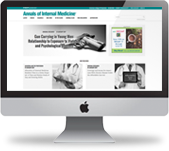Tallying the cardiac risk calculators
Predicting and addressing the cardiac risks a patient faces with surgery have changed a lot since the first calculator for this task was published in 1977.
Predicting and addressing the cardiac risks a patient faces with surgery have changed a lot since the first calculator for this task was published in 1977, said Steven L. Cohn, MD, MACP, professor emeritus in the department of medicine at the University of Miami.
“I go back almost that far,” he told attendees at the Society for Perioperative Assessment and Quality Improvement's 2025 Perioperative Medicine Summit, held in Denver in March. “In my residency days, [we were] calculating risk to find out who's at increased risk. But what could we do about it back then?”

When the first cardiac risk calculator was published in the New England Journal of Medicine by Lee Goldman, MD, MPH, FACP, and colleagues, there were no statins, P2Y12 inhibitors, troponin tests, pharmacologic stress tests, or even two-dimensional echocardiograms, Dr. Cohn noted.
In the decades since, tests and interventions for assessing and reducing perioperative risk have proliferated. However, so have risk calculators, giving physicians choices, maybe too many, about which to use.
The recently updated guideline on perioperative cardiovascular management for noncardiac surgery from the American College of Cardiology, American Heart Association, and other groups (see this story) doesn't help much with that question, Dr. Cohn noted.
The previous version of the guideline, published in 2014, recommended any of three calculators: the Revised Cardiac Risk Index (RCRI), the Universal National Surgical Quality Improvement Program (NSQIP) Perioperative Myocardial Infarction (MI) and Cardiac Arrest (MICA) Risk Calculator, or the American College of Surgeons (ACS) NSQIP Surgical Risk Calculator.
The 2024 update expanded the list of options to also include the Goldman Index of Cardiac Risk, the Surgical Outcome Risk Tool (SORT), the NSQIP Geriatric-Sensitive Perioperative Cardiac Risk Index (GS-CRI), and the AUB-HAS2 Cardiovascular Risk Index. “This time, they didn't mention anything about preference,” said Dr. Cohn.
To help clinicians assessing patients' cardiac risk choose among these many options, Dr. Cohn reviewed the pros and cons of each calculator. (He noted that charts comparing the calculators are available in the second edition of his book “Decision Making in Perioperative Medicine,” just published by ACP in partnership with McGraw Hill.)
The RCRI has a long history, having been developed in 1999, but there's an important caveat to using it, Dr. Cohn warned. “It's not supposed to be for low-risk or ambulatory procedures. You need to have a two-day length of stay,” he said.
The RCRI includes six factors that were found to predict increased risk of adverse outcomes during a surgical hospitalization: high-risk surgery, history of ischemic heart disease, heart failure, stroke or transient ischemic attack, diabetes treated with insulin, and a preoperative creatinine level greater than 2.0 mg/dL.
Patients who meet at least two of those criteria are at 4% or higher risk of cardiac complications during their stay. Dr. Cohn considers those with zero or one risk factor on the RCRI low risk, but he noted that some colleagues disagree and place their cutoff for concern at one risk factor.
Aside from that debate, a major advantage of the RCRI is its simplicity. “It's the easiest one to use,” Dr. Cohn said. “It's been around for 25 years, validated externally in multiple studies.” (Use the original, not the modified version offered by MDCalc, because the latter is based on studies with patients, procedures, outcomes, and timeframes that differ from those in the original study, he advised.)
The RCRI's age also has disadvantages, though, such as the use of creatine kinase-MB instead of troponin and a broad categorization of surgeries that doesn't account for laparoscopic approaches, for example. Another disadvantage is that the RCRI doesn't work well for patients undergoing major vascular surgery, particularly abdominal aortic aneurysm repair.
The MICA calculator came along in 2011, with five factors: type of surgery, dependent functional status, elevated creatinine level, American Society of Anesthesiologists class, and increasing age. Important differences from the RCRI include that it predicts risk over 30 days rather than just in-hospital, but only for the outcomes of MI and cardiac arrest. The MICA also allows more specificity about the patient's type of surgery.
It also has disadvantages. “You can't use it in your head and need to use a phone or computer,” said Dr. Cohn. The database with which the MICA was developed also lacks information about coronary artery disease, stress testing, and echocardiograms, he noted.
The next calculator on the block, arriving in 2013, was the ACS NSQIP Surgical Risk Calculator, which Dr. Cohn called “the most comprehensive.” It bases risk estimates on the surgical procedure, identified by CPT code, plus 20 other variables and covers a 30-day time period.
“It looks imposing … but it's not that bad,” he said, estimating that completing the online tool takes about two minutes. Advantages include that the ACS NSQIP compares the individual patient's risk of a number of outcomes to the average patient's in a color-coded format.
“That is useful to share with patients, family, and anybody else,” said Dr. Cohn. “It's a little bit simpler for them to understand.”
Disadvantages include that the ACS calculator has been found to overestimate risk for the lowest- and highest-risk patients and underestimate it for those in the middle. And, of course, it can't be done in your head.
One of the newest risk calculators, the AUB-HAS2, is simple enough to use without a computer. Dr. Cohn cautioned that he hasn't used it in practice but does consider this calculator “possibly the most promising of the new ones.”
AUB stands for the American University of Beirut, where the calculator was developed and validated, while each letter of the rest of the acronym represents two risk factors. “The ‘H’ is history of heart disease and heart disease symptoms, the ‘A’ is anemia and age, and the ‘S’ is surgery—vascular surgery or emergency surgery,” explained Dr. Cohn.
Patients with zero or one factor have a low risk of surgical complications, those with two or three are at intermediate risk, and more than three means high risk. The calculator has been validated using the NSQIP data set, Dr. Cohn noted.
Other new calculators include the Vascular Quality Initiative (VQI) Cardiac Risk Index, the Geriatric-Sensitive Perioperative Cardiac Risk Index, and the prediction model by Woo and colleagues, which was published in January 2021 by the Journal of the American Heart Association.
“These came to be because of disadvantages or flaws in the other risk calculators,” said Dr. Cohn. Specifically, these new calculators add detail on vascular surgery, older patients, and stroke risk, respectively.
So which to use? Dr. Cohn has studied that question, comparing the RCRI, the MICA, and the ACS NSQIP in a January 2018 publication in the American Journal of Cardiology. “What we found was that all the calculators performed pretty well, as long as they were used in the setting in which they were derived. Once you start changing things—changing the outcomes, changing the time frame—performance drops,” he reported.
Other researchers had similar results in a November 2019 review published by Mayo Clinic Proceedings. “What they found is there were basically two groups of risk calculators, those that had higher accuracy but predicted a narrower range of complications, like the MICA, and those that had a lower accuracy but predicted a broader range of complications, like the RCRI,” Dr. Cohn said.
The authors of that review suggested that the solution to this dilemma was to not rely on a single calculator. “I think that's what you should do,” said Dr. Cohn. “And whenever two calculators give you different numbers, you need to think about what's going on and why they differ.”
The future of perioperative risk assessment may involve even more calculators, Dr. Cohn predicted, citing recent studies in which institutions have used artificial intelligence to assess risk in their own patient populations.
“If you can develop something at your own institution, that's the most specific calculator you're going to be able to get. It doesn't mean it's going to be applicable to somebody else, but it's certainly going to be applicable to your place,” he said.
That said, don't forget the original risk calculator—your brain. “Remember that these are just tools to assist you. The history and physical and your clinical judgment is the main thing,” said Dr. Cohn. “Use good clinical judgment.”





